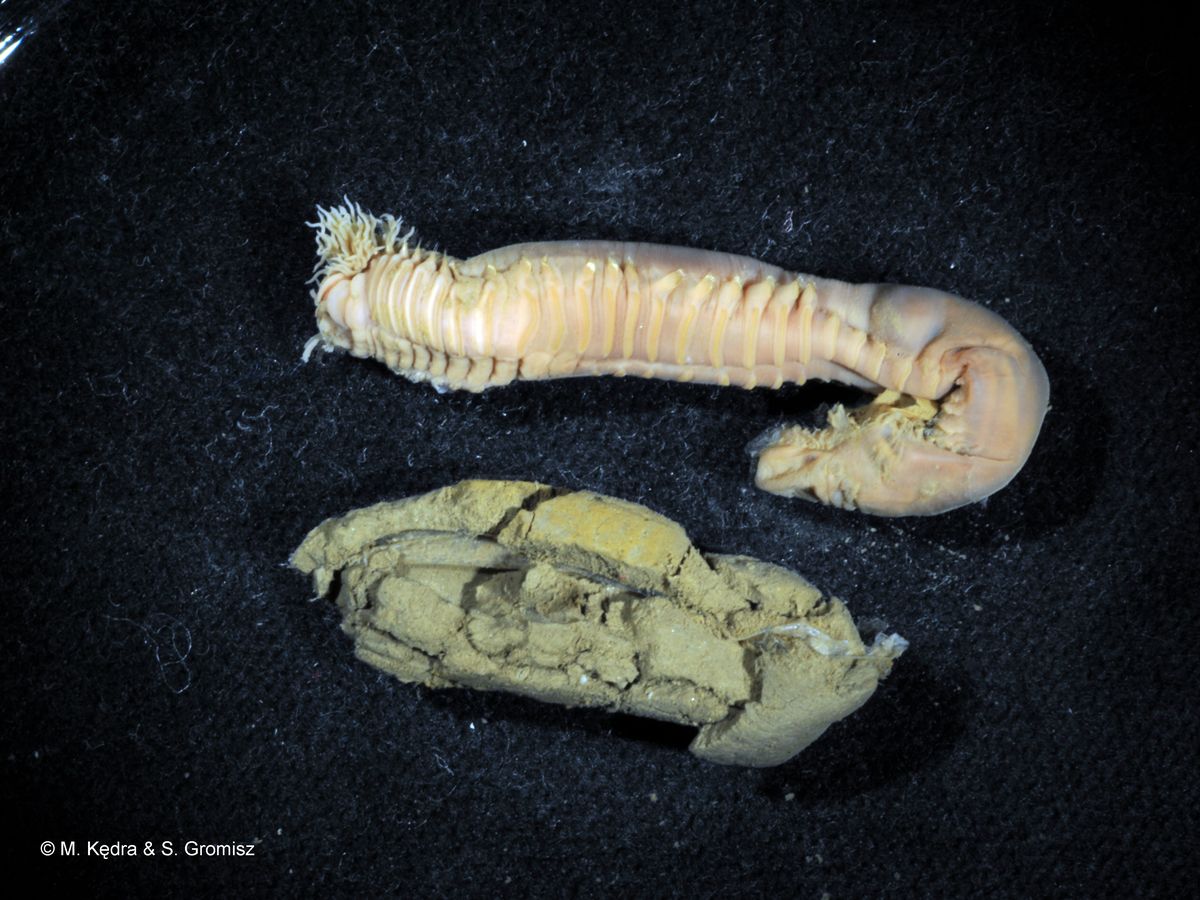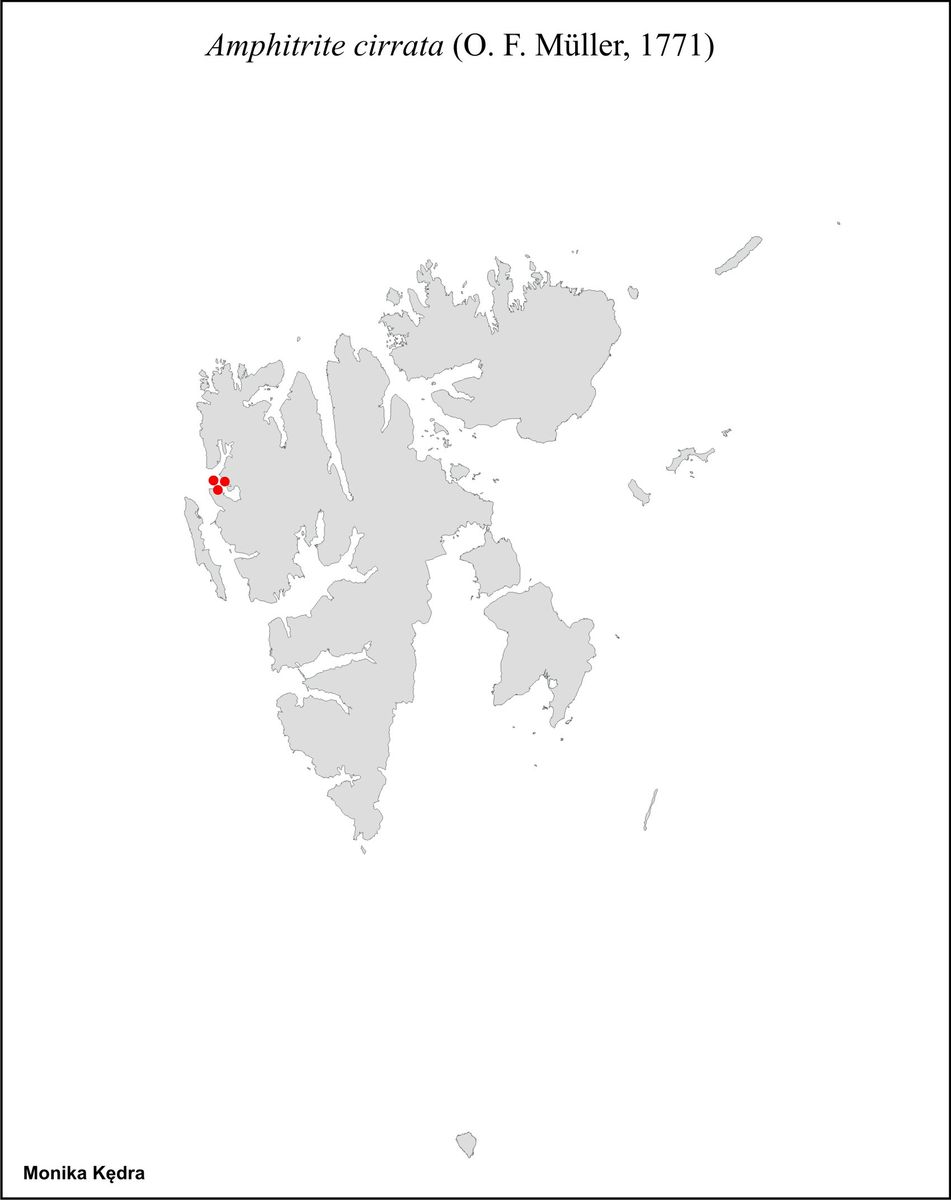Amphitrite cirrata (O. F. Müller, 1771)

|

|
Amphitrite cirrata O.F. Müller, 1771 in 1776
Terebella montagui Quatrefages, 1865
Amphitrite palmata Moore, 1905
Amphitrite radiata Moore, 1908
Distinguishing characteristics
Body long.
Three pars of branchiae - simple filaments arising from wartlike stem.
Species description
Tentacles numerous, very long. Upper lip low, covering mouth dorsally and laterally. Three pairs of branchiae on segment 2-4, each branchia consisting of numerous free filaments arising from a very short stem. 17 thoracic segments with finely denticulate capillary chaetae (from segment 4). Uncinigerous tori from segment 5, long on thorax, short on abdomen. Uncini in double rows on segments 11-20. Pygidium without appendages. Tube – a thin layer of secretion incrusted with a thick layer of mud and a few sand grains.
Size
Up to 200 mm long.
Color
Alive pinkish gray to brown, tentacles with brown spots, branchiae red.
Habitat
On mud, clay, sand and mixed bottoms, and also on hard substrata, such as coralline bottoms, Sabellaria reefs and among ascidians. Lower eulittoral to depths below 2700 m. Salinity range euhaline to mesohaline.
Mobility
Sedentary.
Feeding
Surface deposit feeder.
Facultative suspension feeder.
Life cycle
Probably pelagic larvae.
Distribution
Eastern North Atlantic to the Azores, Mediterranean, North American Atlantic, West Greenland, Canadian and Alaskan Arctic, Siberian Arctic, Bering Sea, Sea of Okhotsk, Japan Sea, North American Pacific. East Greenland, Svalbard, Barents Sea, Iceland, the Faeroes, Shetland, entire Norwegian coast, northern North Sea, Skagerrak, Kattegat, the Öresund and the Belts, western Baltic, east coast of Great Britain.

